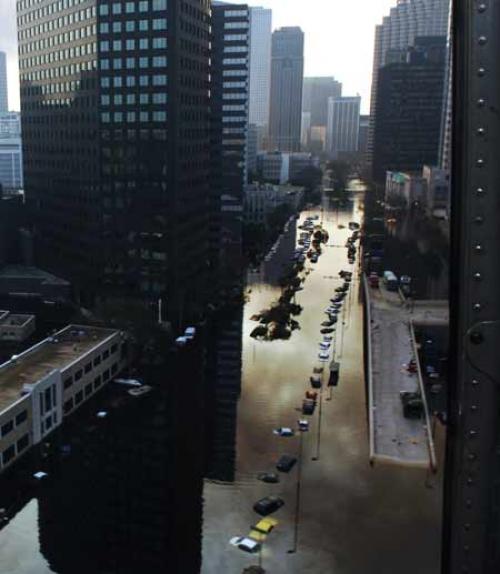This is an episode from the “What Makes Us Human?” podcast's fifth season, "What Do We Know about Inequality?" from Cornell University’s College of Arts & Sciences, showcasing the newest thinking from across the disciplines about inequality. Featuring audio essays written and recorded by Cornell faculty, the series releases a new episode each Thursday through the fall semester.
We've known for a long time that climate change worsens inequality. Within countries, between countries, it’s the poor who have contributed the least to carbon emissions who will suffer the most from climate change.
But my research shows that efforts to adapt to climate change can also worsen inequality. Due to political and fiscal interests, governments tend to prioritize areas of higher value real estate over poor communities. Just this spring, New York City Mayor Bill De Blasio announced a proposal for a $10 billion seawall for Wall Street and lower Manhattan in the runup to announcing his presidential bid. Meanwhile, NYCHA, New York City's Housing Authority, the country's largest public housing provider, is in bankruptcy. And it hasn't even done a portfolio assessment of its climate vulnerability. Reforms for the National Flood Insurance Program could give more money to buyout property owners in flood prone areas ahead of the next storm – but we have no plan for helping homeless residents cope with climate change. And then you see poorer and smaller municipalities asking – what will we do when places like New York City, Boston, and Miami suck up all the resources?
Adaptation can also worsen inequality when people who are mobile move away from high risk areas. Speculators and homeowners in Greater Miami are buying properties in higher-elevation neighborhoods like Little Haiti. National and global property management companies are buying up land in places like downtown Buffalo and Detroit, betting that these inland areas will become more attractive under climate change. So neighborhoods that have long been neglected are suddenly experiencing the pressures of climate gentrification and displacement.
So, what do we do? Advocates of the Green New Deal say we should be investing in more resilient and protective infrastructure for the poor. But research tells us this is not enough or even desirable. There simply won’t be enough money to protect all neighborhoods along every coast and river. And even if a poor community gets improved infrastructure, it’s more susceptible to gentrification and displacement. Building bigger levees and seawalls attracts more development behind them, putting more people in harm’s way for the next storm or the next amount of sea level rise. And these investments do nothing about droughts and heat waves, which are even more deadly than floods. Tackling adaptation goes far beyond giving someone a seawall.
My research suggests that societal transformation for climate change requires us to think about vulnerability more comprehensively. Why do we build in high risk areas? Why do we spatially concentrate wealth and development in a few places that makes achieving equity so hard? Why do the poor have so little control over their communities? We have to plan economic development nationally so that our cities and economies reflect new maps of global environmental change. Where in the country would we want new growth to happen and with what economic drivers? Within states and regions, we need to think about how to better connect and balance rural and urban development. Partisan politics reflect the wealth disparities and economic decline in rural, agricultural, and Rustbelt communities that can be at the heart of tackling emissions, food security, and adaptive, just cities. Within communities, we need to consider how to foster community land ownership, farm ownership, or home ownership among working class groups so that they have more collective power to resist displacement and create and control their destinies.
Planning for climate change has all the potential to worsen societal inequality. But tackling regional economic development, wealth disparities between cities and between cities and rural areas, and changing how we think about who owns what land, how, and for what -- to me, these are the beginnings of a Green New Deal for Adaptation.




